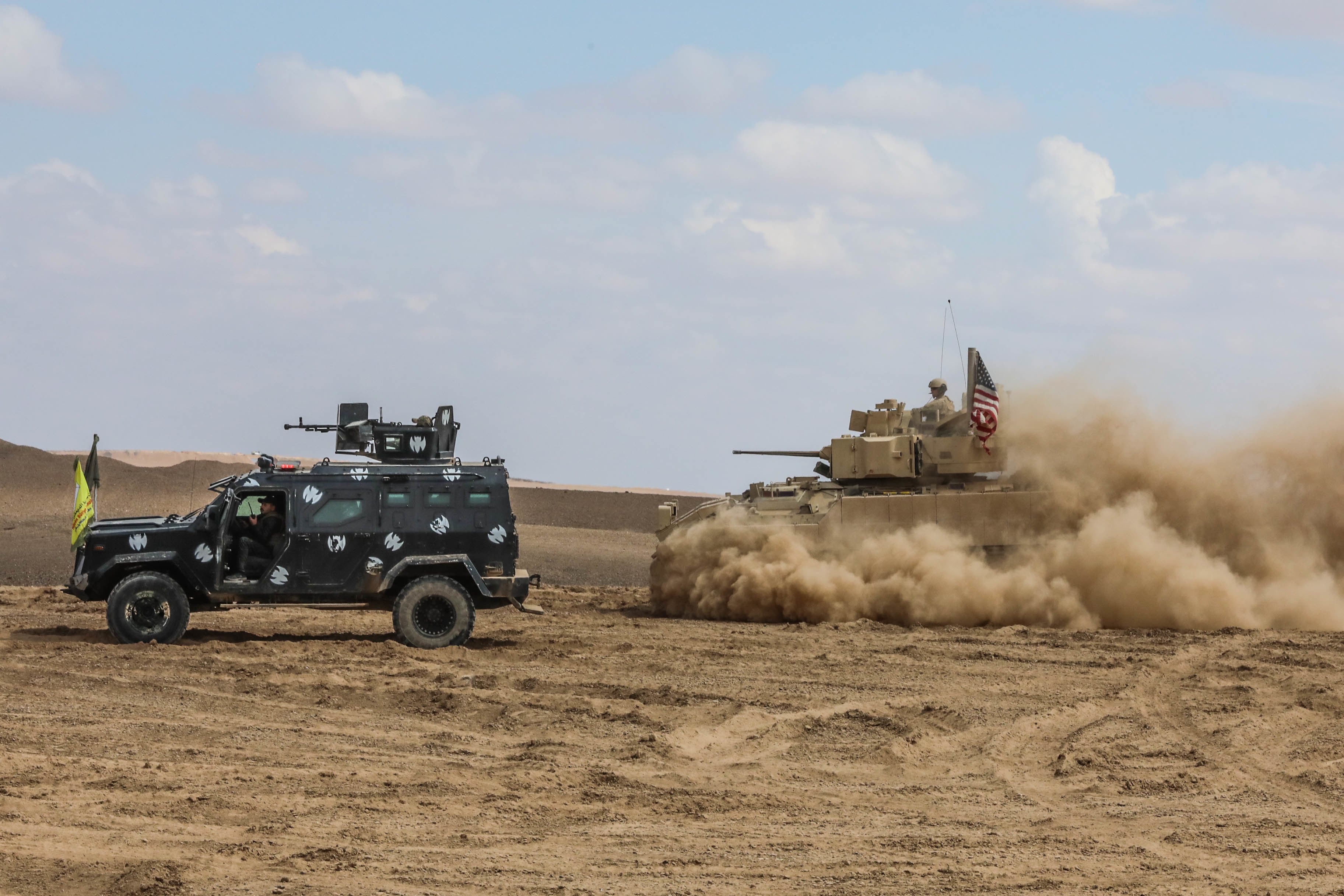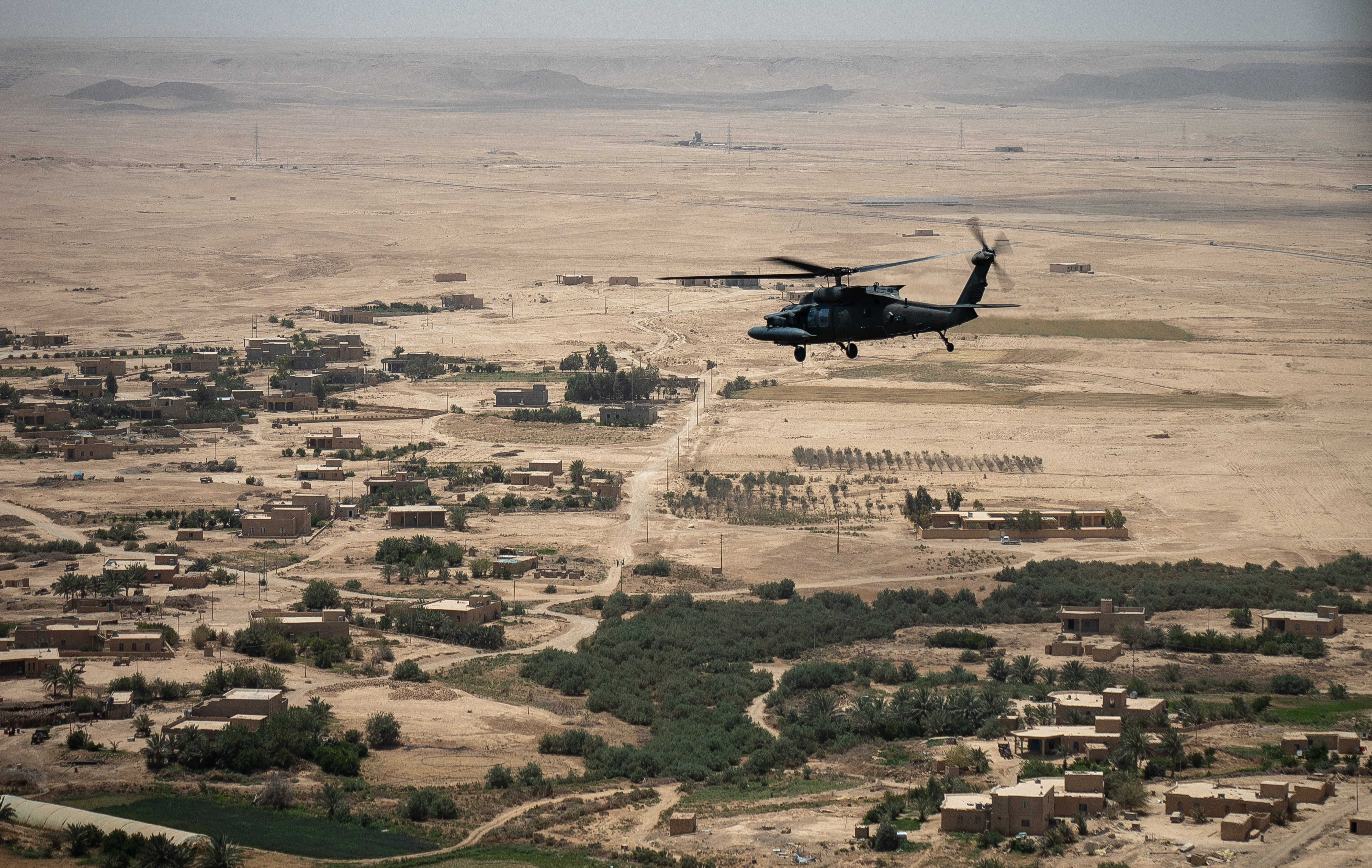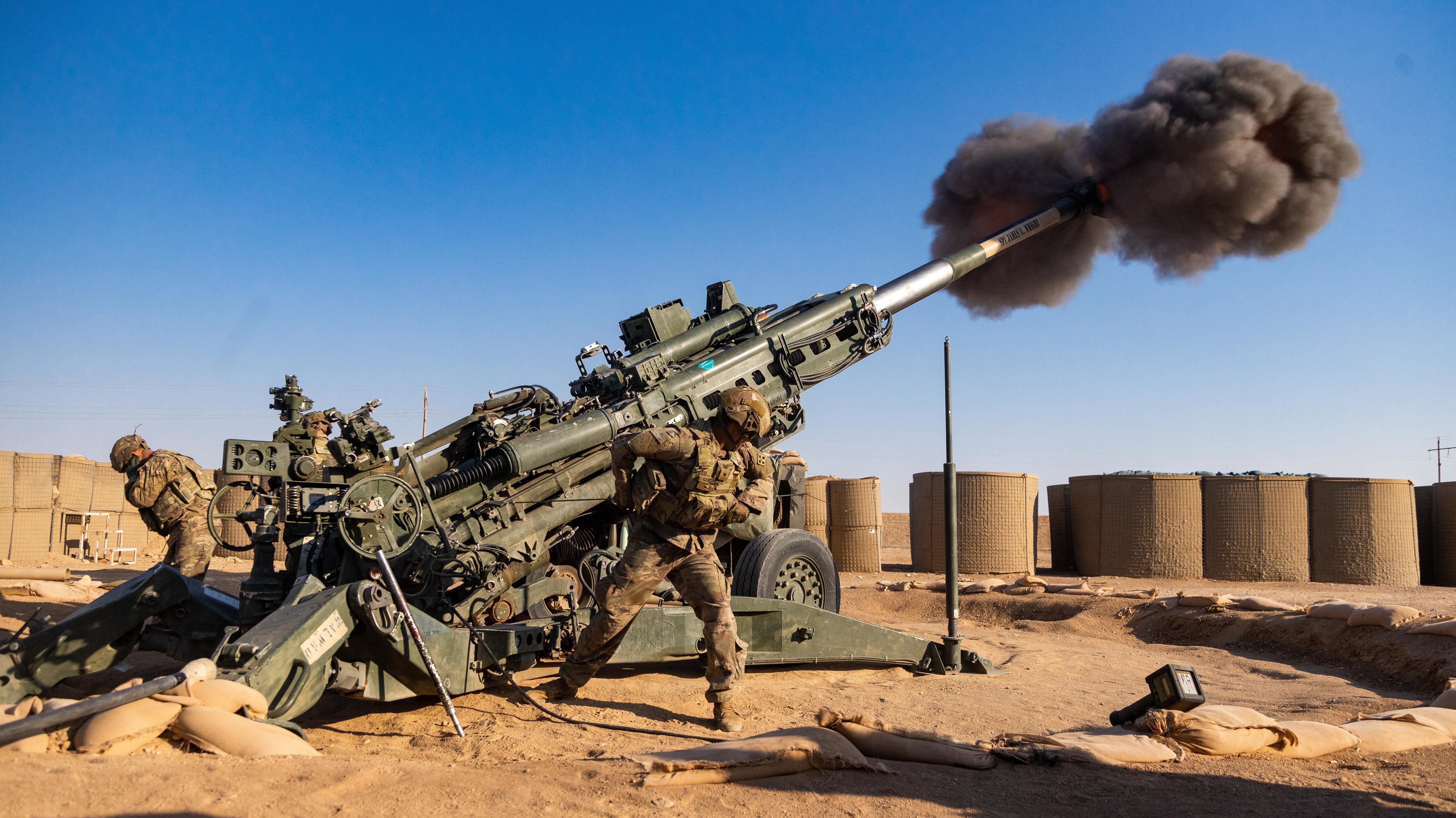In another back-and-forth this month, the U.S. military said it killed several militants attacking its outposts in Deir ez-Zor in northeastern Syria on Wednesday night and Thursday morning.
Militants attacked the bases at approximately 7:20 pm Wednesday when several rockets landed inside the perimeter of Mission Support Site Conoco and near the vicinity of Mission Support Site Green Village. The U.S. has argued that the militants are backed by Iran, a charge Tehran has denied.
One U.S. service member reported a minor injury, but has returned to duty, while two others are being held for evaluation for minor injuries, according to U.S. Central Command. Attack helicopters retaliated Wednesday night, killing two or three of the suspected militants and destroying some vehicles and equipment used to launch rockets, according to CENTCOM.
On Thursday morning, CENTCOM confirmed the U.S. also responded with another barrage of airstrikes in Deir ez-Zor, using AH-64 Apache helicopters, AC-130 gunships and M777 artillery. Four enemy fighters were reported killed, and seven rocket launchers were destroyed.
“We will respond appropriately and proportionally to attacks on our servicemembers,” said CENTCOM boss Army Gen. Michael Kurilla. “No group will strike at our troops with impunity. We will take all necessary measures to defend our people.”

The attacks come in the wake of a number of exchanges between U.S. forces and allegedly Iranian-backed militias. While the militants have a history of targeting U.S. forces in Syria over the past five years, the past couple weeks have seen a marked uptick in altercations.
The U.S.-led Operation Inherent Resolve reported two attacks on Aug. 15 — one at Al-Tanf Garrison in southern Syria and another at Green Village in the northeast — causing no casualties or damage. The attacks involved the use of rocket strikes and suicide drones, according to OIR.
OIR did not name those responsible for those attacks. But nine days later, on Aug. 24, CENTCOM spokesperson Col. Joe Buccino announced that the U.S. conducted airstrikes in Deir ez-Zor that targeted infrastructure facilities used by the militants and Syrian government.
Those airstrikes, he said, were in retaliation for the attacks on Aug. 15.
“Today’s strikes were necessary to protect and defend U.S. personnel,” Buccino said. “The United States took proportionate, deliberate action intended to limit the risk of escalation and minimize the risk of casualties.”
An opposition war monitor, the Syrian Observatory for Human Rights, said the airstrikes killed at least six Syrian and foreign militants.
The airstrikes rankled leaders in Tehran, who denied any link between the militants in Syria and the Iranian government. Iranian Foreign Ministry spokesperson Nasser Kanaani condemned the retaliatory attacks and the presence of U.S. forces in Syria.

U.S. forces have been operating in Syria since 2015 to combat the rapid rise of the Islamic State’s physical territorial holdings in Iraq and Syria. U.S. forces have remained in Syria after IS’ so-called caliphate collapsed to chase lingering extremists, train U.S.-backed militias and guard oil fields. But that’s not all.
“The conflict has expanded to include U.S. hostilities against Iranian-backed militia groups supporting Syrian President Bashar al-Assad’s embattled regime, without explicit congressional authorization or any clear military objective beyond deterring future attacks. Instead, the United States and these militia groups have devolved into a cycle of ‘tit-for-tat’ strikes,” wrote Tess Bridgeman and Brianna Rosen in April for Just Security. Both served on the National Security Council during the Obama administration.
Undersecretary of Defense for Policy Colin Kahl said to expect more attacks in the near future in a press conference on Aug. 24.
Sustained fighting in Syria raises questions about presidential war powers and international law in the region, as purportedly Iranian-backed militias, and not ISIS, have become the main challenge to U.S. forces in the country.
This recent string of attacks occurred as both countries continued their negotiations to revive the 2015 Joint Comprehensive Plan of Action, commonly known as the Iran nuclear deal. Kahl said the attacks on U.S. installations and the JCPOA are two separate issues, and that the strikes and U.S. responses would not affect negotiations.
“What the strikes last night illustrated is that our commitment to push back against Iran’s support for terrorism, militancy, and the threats that they engage in against our people in the region or elsewhere, are not linked to wherever we end up on the nuclear deal,” Kahl said at the Aug. 24 press conference. “The strike last night was a pretty clear communication to the Iranians, that these things are on different tracks.”
Zamone “Z” Perez is a reporter at Military Times. He previously worked at Foreign Policy and Ufahamu Africa. He is a graduate of Northwestern University, where he researched international ethics and atrocity prevention in his thesis. He can be found on Twitter @zamoneperez.




